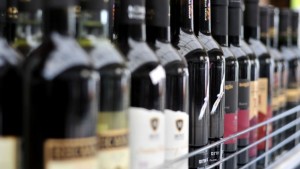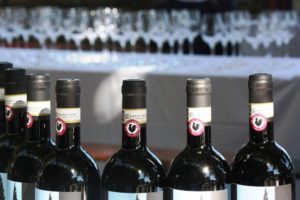Articolo disponibile anche in: Italian
Most Italians buy their wine in the supermarkets. In 2016, they bought 500 milion liters off the shelves, spending one and a half billion euros!
60% of sales were represented by territorial reference (Docg, Doc, Igt), for a growth of more than 2.7% in 2016 and 4.9% in the first bimester of 2017 (by volume). More quality and ties with the territory are in continual movement. Wine cellars and large distribution names are ready to improve collaboration in order to satisfy the demands of consumers.

This is what emerged at Vinitaly during the 13th round table organized by Veronafiere on the theme of wines and Grand distribution, where research by the IRI Institute and a report on Brexit and Wine by Alex Canneti, off-trade Sales Director of Berkmann Wine Cellars of London, were presented.
Research by the IRI underlined the changes taking place in consumber habits. There are fewer one and a half liter bottles, bulk wine, wine in demijohns and cardboard containers sold.
The 75cl bottle is the queen of the market. Still wines are more requested than sparkling (possibly due to the boom of the spumantes, +7% in 2016.)
Organic wines are also rapidly on the rise and maintain a special place in Grand distribution. Changes are also influenced by gradual generational changes and the renewed interest in wine by younger consumers.
Studies by the IRI on the behavior of consumers in Grand distribution reveal that 86% of them are likely to experiment new products; they look for novelty on the shelves and often visit wine websites (33%).
“We are on the right track, helped by time,” said Cesare Cecchi, of Cecchi winery in Castellina in Chianti and advisor to Federvini. “We should absolutely not betray the quality that is sought after by the consumer. It would by an unforgivable error. The wineries must continue to research the quality of our product without accepting shortcuts, and the distributors must encourage production following this route”.
Read more...
 The backbone of the collaboration between the wineries and the distributors is represented by medium sized companies more than by the large wineries, according to Eugenio Gamboni, commercial director of the “Gruppo Vegè”: “The axis should be consolidated, made up mostly of small and medium sized family run businesses, some of which have been around for generations. They should discuss and compare freely, away from the more complex world of large industry and multi-national companies”.
The backbone of the collaboration between the wineries and the distributors is represented by medium sized companies more than by the large wineries, according to Eugenio Gamboni, commercial director of the “Gruppo Vegè”: “The axis should be consolidated, made up mostly of small and medium sized family run businesses, some of which have been around for generations. They should discuss and compare freely, away from the more complex world of large industry and multi-national companies”.
Among the wineries exhibiting in Vinitaly, worry about uncertainty on the British and US markets was expressed. It is a theme discussed by Alex Canneti of Berkmann Wine Cellars of London: “Brexit is a challenge for the sale of Italian wines, since Australia, South Africa and New Zealand are the first countries to institute bilateral agreements with the United Kingdom . The only solution to this danger is to give the UK 10 years to share the same customs charges as those of the United Kingdom and to negotiate a treaty of free commerce. Then everything will depend upon the evolution of the post Brexit negotiations between the UK and the UE”.
“But the potential for the exportation of Italian wines in British large distribution (Majestic and Waitrose first of all) is great,” added Canneti. “Not only for sparkling wine, but also for the reds. For example, Cannonau, Passimento/Amarone, Chianti Classico Veneto Classico and smooth Sicilian and Puglia wines. There are also good prospects for the new whites, like Fiano, Vermentino, Pecorino and Grillo. Let’s not forget the success which the ‘fantasy label’ has had for years”.


